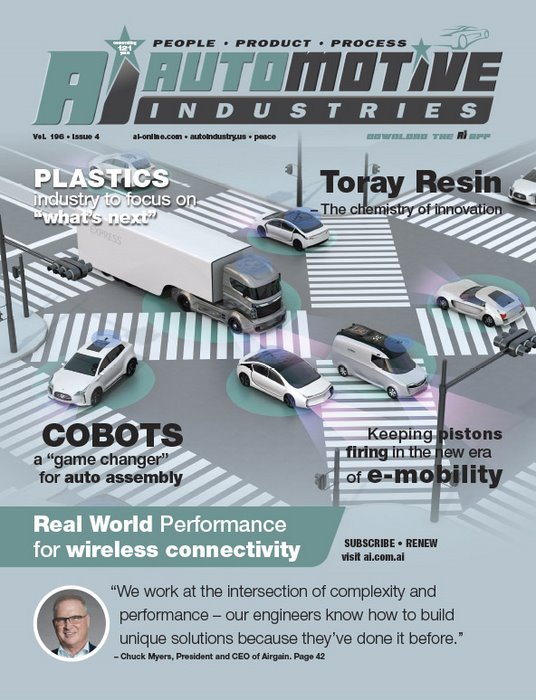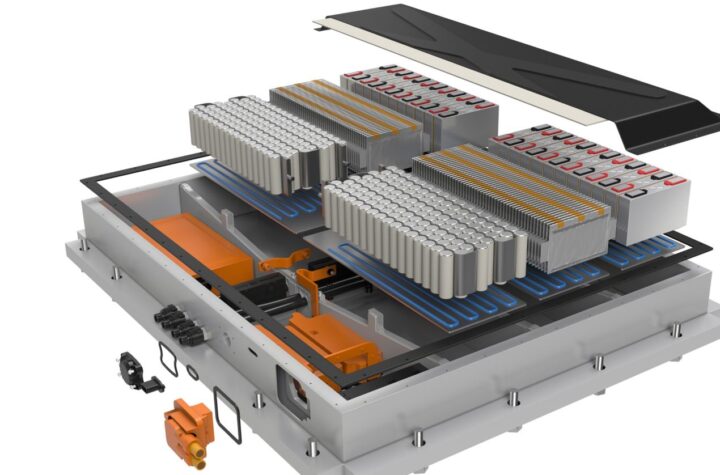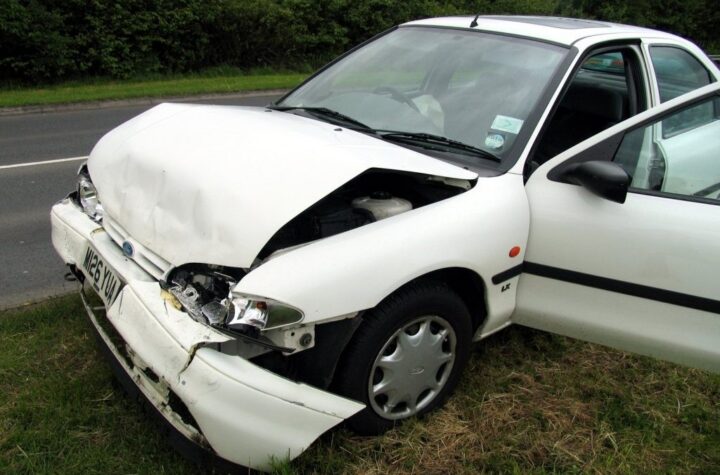
It is predicted that by 2030, 95% of US passenger miles travelled will be served by on-demand autonomous electric vehicles (A-EVs), owned by companies providing Transport as a Service. High performance wireless connectivity has a critical role to play if this is to become a reality.
The expectation is that 5G will provide the necessary bandwidth and speed, as it has the potential to be 10 times faster than 4G LTE. Airgain, a global leader of high-performance wireless communications platforms, is working at this intersection of complexity and performance in the automotive industry. The company, which is dedicated to the advancement of wireless connectivity solutions for in-vehicle, vehicle-to-vehicle and vehicle-to-infrastructure applications, recently became a member of the 5G Automotive Association (5GAA).
Automotive Industries (AI) asked Chuck Myers, President and CEO of Airgain, what kind of automotive solutions is Airgain developing.
Myers: We are seeing dramatic changes in automotive design and ever-increasing wireless networking complexity, with multiple standards covering different use cases in each vehicle. At the same time, the space to add connectivity is getting smaller as manufacturers are filling the cars with technology driven options, masses of motors, and miles and miles of cables. Look inside the car and it’s filled to the top with all types of electronics.
Designing an antenna system is easy in many areas, but it becomes much more challenging when you are limited by space. What we bring to automotive design and engineering is a high level of comfort working in very constrained spaces, and the ability to build solutions enabling multiple antennas supporting different standards and frequencies to coexist and perform to a high level in a very confined space.
AI: How is your company developing unique M2M and IoT solutions from the automotive perspective?
Myers: We have significant experience building leading-edge wireless solutions for different markets over the past 15 years. Our engineers use their deep knowledge of automotive innovation – they know how to build unique solutions because they’ve done it before.
AI: What role does Airgain play in the connectivity aspect of the connected car with M2M, IoT, ADAS, WLAN, and advanced telematics?
Myers: We work at the intersection of complexity and performance. Technical capabilities, such as the performance characteristics of different frequency bands, combine with varying market needs. By necessity, there are now many different wireless standards designed for specific functions across the industry. As time progresses, more and more of those standards need to be built into our vehicles. However, the more radios you add, the greater the likelihood of interference and impacted performance – this is undesirable within your home, but absolutely unacceptable within a car. Our role is to understand how the whole system fits together, develop solutions that take those complexities into account, then deliver the ever increasing performance levels needed in real world situations.
AI: What are automakers looking for in terms of integrating a wide range of radio access technologies to support connected vehicles?
Myers: Three words: Real World Performance. Automakers are now facing many of the same challenges other sectors have been wrestling with for the last few years – increasing density of wireless technologies, spanning different standards which all have to play well together. What they require are solutions that enable these disparate but essential systems to deliver the performance needed in the real world, not the test lab.
AI: How did the buyout of Antenna Plus help further your product line in something like fleet management solutions?
Myers: Airgain has traditionally operated at the leading edge of its core markets, delivering custom solutions to help solve the most complex problems for our partners. On the other hand, Antenna Plus has a fantastic reputation for delivering great products with more standard form-factors into fleet management and other markets. So, it has been a great opportunity to bring their expertise, relationships, and market knowledge together with our proven ability to design high-performance solutions. Initial customer feedback says that combination will be hard to beat.
AI: What has helped Airgain be one of the leaders in the antenna solutions space and how do you see the market evolving in the future?
Myers: We built our company by solving the hardest problems in the industry – multiple radios supporting different standards in extreme form-factors. However, those “edge” challenges have now moved into the mainstream and we are seeing increased complexity across all our markets. This is only the beginning. Moving forward, everything is going wireless and new standards are popping up seemingly every month. Add the inevitable movement of the cellular industry to the much more complex 5G technologies, and the challenges of complexity and interference are only going to become greater. Airgain combines the best engineering and brightest minds to deliver high-performance wireless platforms for solving the most complex connectivity challenges, regardless of the environment.
AI: What are some of the new protocols, such as 802.11p, and what role will they play in vehicle to vehicle and vehicle to infrastructure communications? Will GPS continue to remain a basic requirement for tracking?
Myers: Covering GPS first – it isn’t going anywhere. In fact, as autonomous driving becomes more prevalent, its importance will increase. Ultimately, the new sensing technologies being added to vehicles to enable moves toward autonomous driving all define relative position – where the cyclist is in relation to the car, where the car is in relation to the traffic lights, etc. To make this all work, we need to have something that defines absolute position, and for that, GPS/GNSS is the only game in town. I think you will see developments in the underlying technology which allow for far higher performance positioning, potentially down to a couple of inches. Combine such precision with the other technologies, and you have the foundation for the future of driving.
As I have already mentioned, there are new protocols popping up all the time. Rather than go through a laundry list, it makes sense to focus on what looks to have the biggest impact – the move to 5G. I n theory and evolution, 5G is a dramatic step on from existing 4G networks, with gigabit speeds, 1ms response times, and 10x better power consumption, among other metrics. What is more, it is being developed to cover a broad set of usage scenarios, which means over time it will find its way into everything, with literally billions of devices using the standard. There are many elements of 5G, but one of relevance here is how it achieves broad capabilities through the utilization of a much wider range of frequencies from 600MHz to 40GHz. From our perspective, that means increased complexity and more antennas – so we will have plenty of work to keep us busy in coming years!












More Stories
DuPont materials science advances next generation of EV batteries at The Battery Show
How a Truck Driver Can Avoid Mistakes That Lead to Truck Accidents
Car Crash Types Explained: From Rear-End to Head-On Collisions